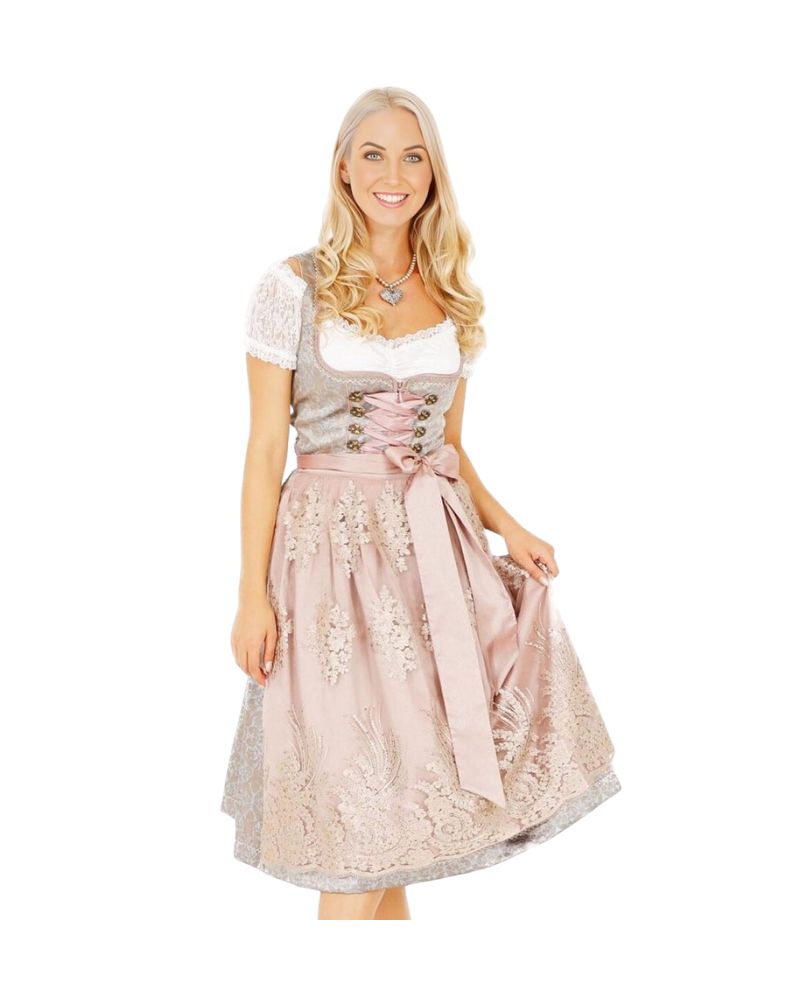Lederhosen are more than just shorts — they’re a proud symbol of Alpine heritage, fashion, and function. Whether you’re heading to Oktoberfest or just want to rock a timeless traditional outfit, the fit of your Lederhosen is critical. Unlike regular trousers, Lederhosen are crafted from leather and have their own rules when it comes to sizing, comfort, and wear. In this guide, we’ll help you figure out the perfect Lederhosen fit, and how to make sure you stay stylish and comfortable.
1. Understanding What Lederhosen Are
Lederhosen, literally “leather trousers,” originate from Bavaria and Austria. Traditionally made of suede or deerskin, these rugged trousers were designed for durability. Today, they’re iconic outfits for folk festivals, cultural celebrations, and modern fashion lovers. These leather pants are often worn with suspenders, embroidered detailing, and matching accessories, making the overall look both rustic and classy. A proper fit is essential to bring out the real charm of these traditional garments.
2. Why Getting the Fit Right Matters
Leather isn’t as forgiving as cotton or denim. That’s why the right fit is important from the beginning. Ill-fitting Lederhosen can cause discomfort, restrict movement, or just look awkward. A snug fit is ideal, but there should still be room for comfortable movement. Keep in mind that real leather stretches slightly over time, so don’t be surprised if they feel tight at first. A good fit enhances both style and functionality, especially when you’re dancing or walking at events.
3. The Role of Traditional Suspenders
Suspenders, also known as Hosenträger, are not just decorative — they help keep your Lederhosen in place. If your pants feel too loose around the waist, the suspenders will carry the weight. However, they shouldn’t dig into your shoulders or hang too loosely. Adjustable buckles allow you to customize the fit. When paired with a well-fitted waist and hips, the suspenders complete the outfit both visually and practically.
4. How Tight Should Lederhosen Be?
The leather should hug your body but not squeeze it. A bit of tightness in the beginning is normal because leather tends to soften and mold to your body with time. Focus on getting the correct waist and hip measurement first. Avoid extremely tight fits around the thighs and calves. If you’re buying new Lederhosen, remember they’ll stretch about half a size after a few wears, giving you a more custom fit over time.
5. Finding the Right Waist Fit
Lederhosen sit slightly higher on the waist than modern jeans. They should sit comfortably on your natural waistline, not your hips. If the waistband feels tight when sitting down or causes discomfort after meals, it’s probably too small. If it sags even with suspenders, it’s too loose. For a professional guide on this specific fitting topic, visit this helpful sizing resource to learn more.
6. Perfect Fit Around the Thighs and Hips
This is where most people go wrong. Leather doesn’t breathe like cotton, so you’ll want enough space to prevent sweating and chafing. You should be able to sit, squat, and move your legs comfortably. While a slim fit is fine, your Lederhosen should never feel like skinny jeans. Comfort is king, especially if you’ll be wearing them all day at festivals or weddings.
7. Length Options: Short, Knee-Length, or Long
Lederhosen come in multiple lengths:
- Short – Above the knee, perfect for hot summer festivals.
- Knee-length – The most common traditional style.
- Long (Bundhosen) – Ideal for colder seasons or formal settings.
Choose your length depending on the occasion and climate. Short styles offer more freedom of movement, while knee-length styles are timeless and suit all body types.
8. Trying Before You Buy – Or Measure Correctly Online
If you’re purchasing Lederhosen online, you’ll need to take accurate measurements of your waist, hips, and thighs. Compare these with the store’s size chart. Buying from trusted platforms like TheLederhoseHerren.de ensures better fitting guides and size options for a range of body types. Always check return policies in case the fit isn’t perfect on the first try.
9. The Material Matters
Different leathers behave differently. Goat leather is soft and flexible, while cowhide is thicker and more rugged. Deerskin offers luxury and stretch but at a higher price. When trying on Lederhosen, consider how the leather will feel after several hours. Breathability, texture, and weight all affect comfort. Premium materials also stretch better and last longer with proper care.
10. Lining and Inner Comfort
Some Lederhosen come with lining for added comfort, especially around the thighs and crotch area. While not all styles offer this, it’s a welcome feature if you plan on wearing them in warmer weather or for extended periods. A lined interior prevents itching or skin irritation and makes the trousers more breathable.
11. When to Alter and When to Exchange
Sometimes, minor fit issues can be solved by altering the waistband or shortening the suspenders. However, if the Lederhosen pinch too much or sag awkwardly, it’s better to return them. Leather is not easy to alter like cloth, so professional tailoring can get costly. That’s why getting the right fit the first time is so important.
12. How to Break In New Lederhosen
New leather can feel stiff at first. Wear them around the house for short periods to break them in gradually. Sit, bend, and walk around to soften the material naturally. Avoid stretching them manually or exposing them to heat. Just like a good pair of boots, they’ll mold to your shape with time and movement.
13. Matching Dirndls and Lederhosen at Events
Many couples love wearing matching outfits for Oktoberfest or themed parties. When doing so, make sure both the dirndl and Lederhosen complement each other in terms of color and formality. Coordinated looks create a stunning appearance for photographs and celebrations. A great example of a beautifully crafted dirndl to match is the Anarosa Krüger design, known for its elegant detailing and festive appeal.
14. Children’s and Women’s Lederhosen Fit Tips
Lederhosen aren’t just for men — women and kids have plenty of stylish options. Women’s styles may have slimmer cuts or additional embroidery. For kids, ensure there’s enough room for growth and active play. Adjustable suspenders and elastic waistbands make children’s Lederhosen more functional and parent-friendly.
15. Final Advice: Comfort + Culture = Confidence
At the end of the day, your Lederhosen should make you feel confident, not constrained. Prioritize comfort, authenticity, and fit. Pay attention to details like the suspenders, leather type, and thigh room. The better the fit, the more you’ll enjoy the tradition. A well-fitted pair of Lederhosen is more than attire — it’s a cultural experience worth having.
FAQs
Q1. Should Lederhosen feel tight at first?
Yes, slight tightness is normal and expected. Leather will stretch and adapt to your body with wear.
Q2. How do I measure myself for Lederhosen?
Measure your natural waist, hips, and thighs using a flexible measuring tape. Refer to sizing charts online.
Q3. Do suspenders come with all Lederhosen?
Most traditional styles include suspenders, but always check the product description before buying.
Q4. Can Lederhosen be tailored?
Minor adjustments can be made, but full tailoring is difficult due to the leather material.
Q5. What’s the best leather for comfort?
Deerskin is the softest and most comfortable but also more expensive. Cowhide and goatskin are great alternatives.
Q6. Can women wear traditional Lederhosen?
Yes! Many modern women’s styles are designed with flattering cuts and embroidery.
for more detail


